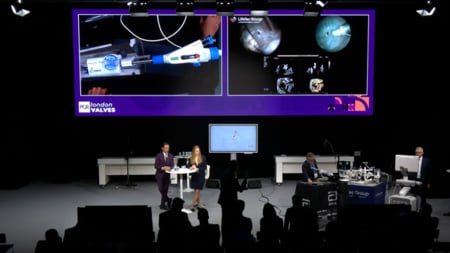29 Nov 2022
Treatment of multi-valve disease
In collaboration with the PCR Tricuspid Focus Group
Anchorperson:
S. Baldus
Moderator:
V. Delgado
Summary
Get a look at these presentations to learn more about the basic haemodynamic interactions between different valve lesions, the existing surgical standards (and evolving transcatheter standards) for the treatment of multi-valve disease, and to discover a selection of cases that demonstrate the importance of clear indications and appropriate timing of transcatheter treatment for multi-valve disease.
Learning Objectives
- To understand the basic haemodynamic interactions between different valve lesions
- To learn more about existing surgical standards (and evolving transcatheter standards) for the treatment of multi-valve disease
- To share cases that demonstrate the importance of clear indications and appropriate timing of transcatheter treatment for multi-valve disease



